(continued from Fannie Mae)
I had my light bulb moment. I knew that I just had to repeat this one thing that works over and over again. I’d go through screen records and charts every day to refine my OTC playbook. I figured that anything that has volume will trade off the same order flow patterns–held bid/ask, then volume, and then a clean trend. My plan after the big FNMA trade was to keep following it every day for smaller trades until the volume completely died and forced me to move on. I’d also setup an OTC scanner to find new stocks with volume.
In June, I focus on base hits and scalp the smaller moves. I have no qualms with making three cents or five cents on a trade. All in all, I make $13,000 trading on my retail. I only have 5 red days. Slow and steady.
My best trade all month looked like this:

$3,500 on a 20 cent move. This chart would look like a total nothing-burger to most traders. It didn’t matter to me. The bank doesn’t refuse your money because it came from scalping.
In July, the range is all but gone. FNMA moves about 10 cents a day with no volume. I spend more time on my MBC account trading listed stocks and I manage to grind out $6500. I only have 3 losing days. I feel pretty good about my consistency. But I also feel increasingly fragile–my go-to stock has run out of steam.
I had my strategies down but what I really needed were some good OTC stocks with juice.
Three Different Flavors of Garbage
OTC stocks are much more liquidity-sensitive than other trading vehicles. The liquidity is either there to trade or it must be avoided completely. There are 3 kinds of stocks that exist on the OTC.1I’m excluding pink sheet ADRs of real companies like Tencent (TCEHY) and Nintendo (NTDOY). Those are legitimate companies that just don’t want to be listed in U.S. markets and they trade very differently, usually just mirroring the stock price on their home exchanges.
1. Pump and Dump

Webistics is the pick of the week! “But why? Its got a 3 million float, the competition’s robust and their technology is three years behind. The stock’s a dog.” Why, because we’re paid to pump it, that’s why! First step of a Pump and Dump, there’s usually some career criminal creating a shell company and distributing the float to all his scumbag cronies. Then you have tier-F broker-dealers, the JT Marlin’s and the Stratton Oakmont’s, cold calling away and looking for any sucker they can convince to buy the stock. Then they hire a “promoter”2(and this is legal as long as you disclose the amount) to create volume and attract traders. Inevitably, the stock dumps to 0, never to be heard from again. They can be good short opportunities if you can locate the stock. I traded many of these back in 2010, names like LEXG, JAMN, MSEH, NXTH. But the Pump and Dump’s heyday was long gone, which is what prompted me to pivot and learn to trade real stocks at MBC.
2. Junk Stock
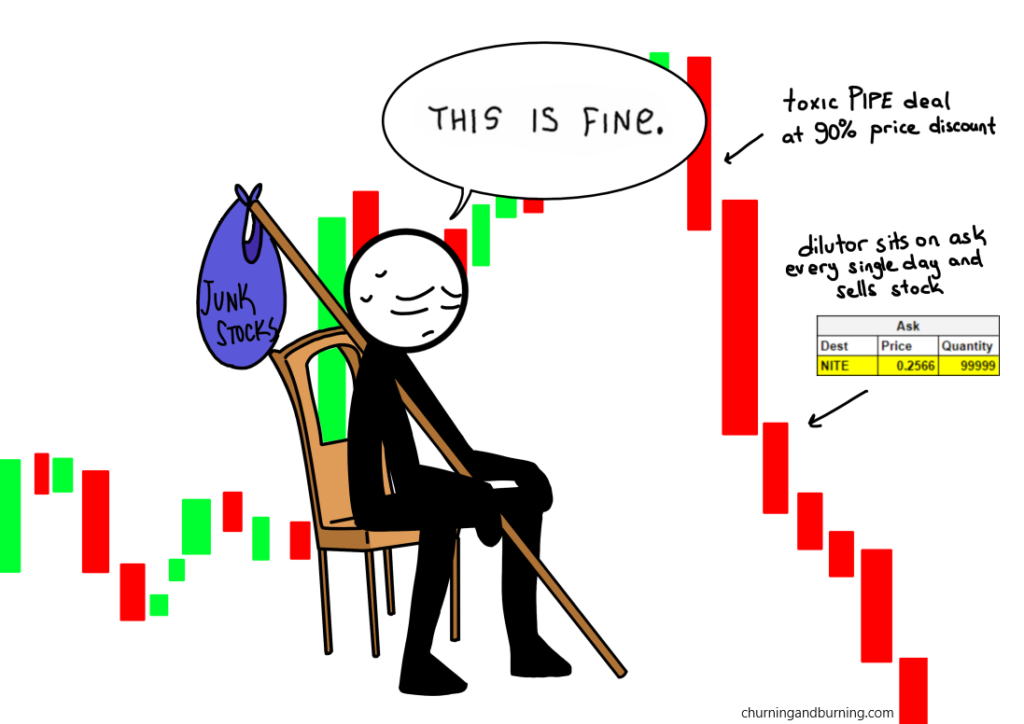
Junk Stocks are fledgling companies with real operations unlike the Pump and Dump. They usually have terrible financials and can’t get traditional financing from legitimate underwriters so they often rely on death spiral financing from private investors. In order to create trading volume, they generate hype via press releases and product launches. One subset of this category is the Delister–Junk Stocks from the NASDAQ that failed to stay compliant with listing requirements. They’re usually some busted all-or-nothing concept like a one-drug biotech that failed clinical endpoints or an oil & gas exploration that died on the vine. The Junk Stocks usually need major themes or exceptional stories to generate serious liquidity–one good example back then was a tech parts company called Liquidmetal Technologies (LQMT) that ran on early iPhone news.
3. Fallen Angel
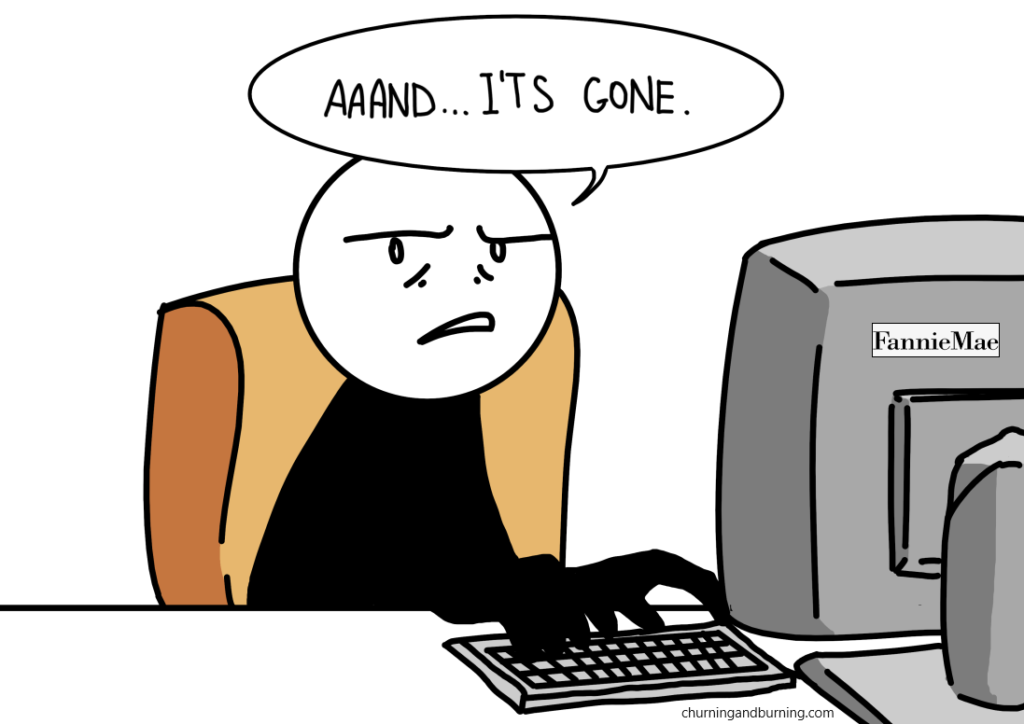
The Fallen Angel is a highly distressed or bankrupt company with a household name. They’ll put the little ‘Q’ at the end of the ticker. Something bad happened–fraud, mismanagement, hard times, or technological obsolescence. When times get really tough like during 08′, you’ll get a flurry of ‘big’ names like Blockbuster, General Motors, and Lehman Brothers falling into the OTC gutters. Investors love a comeback story, no matter how implausible, so naturally all those stocks had 500-1000% moves from the bottom before going to 0. My opinion, backed by my own P&L: the Fallen Angels are the best OTC’s to trade when there’s real liquidity.
There’s only one rule about trading OTC that you need to remember: Never assume anything is real. Everything you see will eventually go to 0.3There might be a .01% that ‘makes it’ to the real exchange and then appreciates further but it won’t be your stock, sorry. When trying to catch a falling knife on a market index or a mega cap stock with no news–that reckless WTG-style “it can’t go to 0!” mindset probably works in your favor. But… “It can’t go to 0” is never a true statement when trying to dip buy an OTC stock. Oh yes it can. 99% of these stocks will go to 0 in the long-run. To make money, you have to be an adept trader who can flip them out quickly without any attachments.
August comes around. MBC finally sorts out a months long delay stemming from compliance issues and enables the Knight Direct platform for OTC trading, a separate platform from Pr0Trade.4Knight Direct wasn’t attached to the Pr0Trade “brainlink” so there were no TIX windows, no blotter. All OTC trades stayed private. There were some ‘issues’ in monitoring risk in these positions. The MBC desk will now trade OTC stocks for the first time. All of this stemming from that May 29th FNMA trade that I made. It feels weird. Both of my trading worlds have collided into one–OTC Bandit Pete and Pro Trader Pete were now one and the same. I had some internal conflicts. I might be competing with others for fills. Management might expect me to trade 100% of my OTC volume on the Knight Platform. Nonetheless, I try trade only a token amount on Knight Direct while still taking the bulk of the risk on my retail account. I do seem to carry a wild amount of unsupervised buying power on Knight Direct though, which helps me spam orders on higher priced stocks.
I needed the Stock Gods to send me another good one and they did–zombie American Airlines aka ticker AAMRQ, a category 3 Fallen Angel that actually had a real chance for positive equity redemption. Rather than just clear all debts and wipe out the shareholder like 99% of all bankruptcies, American was able to conjure a miracle deal to merge with US Airways and form a huge $11 billion dollar new airline company. The stock, which at one point in 2012 had traded as low as $0.24, started trading up to $7. Of course, nothing ever unfolds without chaos on the OTC. Negative anti-trust news came out and crushed the stock to $2 in mid-August..

AAMRQ was tougher than FNMA. It had some traps and didn’t move as clean. But it traded on the same principles and I nailed the stock’s rhythm down quickly. I had a new favorite play called the Opening Drive Play5Opening Drive is an MBC specific term for plays on $50-$100 earnings-driven stocks driving up with a wide first range candle at the 9:30 opening bell. I borrowed the concept and applied it here.–all the orders flood into the stock at 9:30 with a wall of buyers and sellers duking it out. Whichever side wins, play the first move. The opening drive play was usually, though not always, a continuation of the previous day’s trend. Even though AAMRQ was already down huge from $6 to $3 and had most retail traders tunneled in for the knife-catching play, my move was to short the first held ask and letthe sellers walk it down.

I shorted 32,000 shares at 2.88 and covered the majority in the 2.10s. I made over $17,000 without ever being in any drawdown.
For the entire month, I had 55 trades on AAMRQ netting $45,000 total. My largest loss was just a hair over $1000. Net profits for August from both accounts combined: $63,152. I have now surpassed six figures in trading profits for the first time in my life.
I open an e-mail titled ‘Top Traders of August’. The top-10 Austin-based WTG traders net the largest figures, totals ranging from 50k to $150k a month. They’re the adults in the room. We get a token mention in our own seperate column as “Top NYC traders”, just to feel good about ourselves. We’re still at the kids table.

I’m hungry for more. I’m locked in every day and I don’t force a thing because I hate drawdown and I hate losing. I find myself addicted to this order flow driven trading where I don’t have to take any pain and it almost feels like I’m guaranteed to win. But September isn’t great. AAMRQ loses its juice. Lack of opportunities arise and my results fall back down to Earth. $12,500 combined to end the month.
I thought after passing some significant P&L milestones, I’d feel different. Maybe that nagging insecurity goes away. Maybe the depression monster is gone for good. I thought sleep would improve with more financial security but it actually got worse the more my profits increased. I spent so many nights restlessly in bed, dwelling over micro price action and my position sizing choices. AAMRQ back in August, that held bid trade I took at 3pm, why didn’t have I double the size? FNMA in July, why didn’t I buy more when it sprung off support? Little shit like that keeping my mind awake. I have thoughts even more dire: What if the good times are over already? Did I do enough to take advantage? The lack of satisfaction itches at me.
It’s the beginning of October. FNMA starts to spring to life again. I can’t believe how many lives this stock has, it refuses to die off. I muse on whether I have this guardian angel from above looking over me, reasurring me…“Pete, you need something? We got you buddy! Here’s some new volume in Fannie for you to play with!
We didn’t know it at the time, but a BIG HONCHO hedgie was barging into FNMA and resurrecting the order flow. There were many opportunities–none nearly as good as the May 29th bounce trade but still plenty of money for everybody. I give a handful of traders my OTC playbook. Clockwork and Eagle in particular pick it up real quickly.
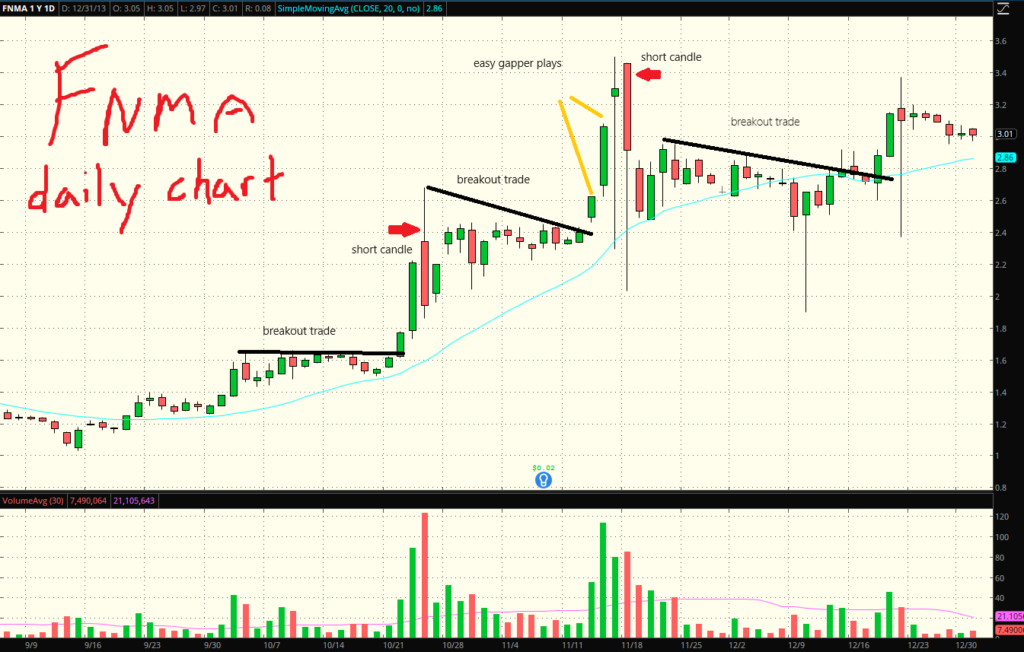
Breakout Play — buy a green daily candle that breaks a horizontal line (ideally with volume and expanded range confirmation) and hold for swing trade.
Clockwork: Just buy above this 1.50 level right P-To? It’s the high of this weekly range.
Me: Yep.
Gapper Play — let’s say you miss the original breakout levels and you need to chase it. Easy, just buy the closing print and catch a 5-10% gap.
Mean Reversion Play — stock goes up 3-4 days in a row. Short for a correction and watch the sellers clean up any steep price moves. Then go long for the micro-mean reversion when the sell correction over-corrects.
Eagle: P-To this is where we short it right? They could take it back down to $2.
Me: Yeah that sounds right.
It’s simple and easy and after a couple days I barely had to explain anything. See it, trade it, crush it. That’s peak day trading.

We crack the top-10 with career high months. The MBC Kids have finally grown up.
There aren’t clear cut rules on when it happens but personally, I’d say it happens around now. This was the point where we became CPTs — Consistently Profitable Traders. We finally made enough to live and eat. This was the critical point if you wanted to sustain a living as a professional trader.
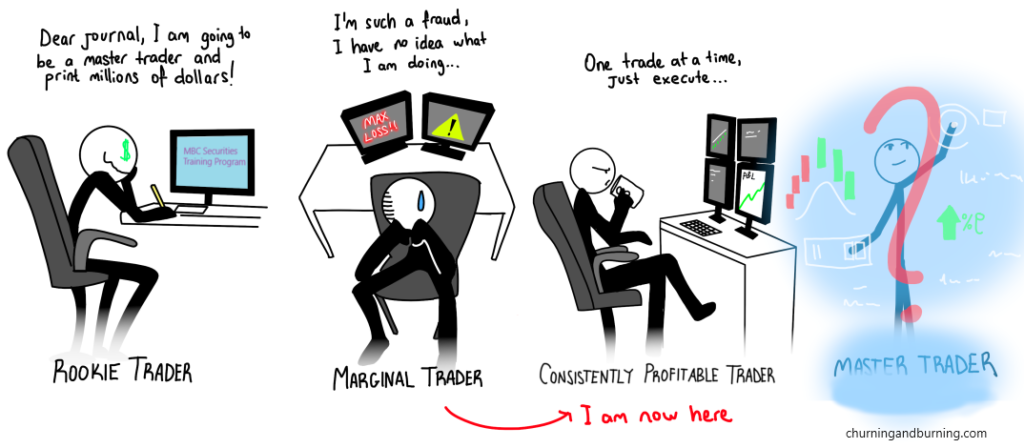
There’s a passage about being a CPT in Victor’s first book, Two Great Positions titled “Becoming One of the Chosen Few”. Once you’re an official CPT™, you feel like you’re a part of an exclusive country club. It’s the result of years of hard work and skill development. It’s the result of adapting a professional mindset where you just make good trades with sound risk management and the rest will fall into place. Victor makes it sound highly process driven and he’s not wrong, it is. But there is an undeniable component of luck and happenstance involved too–when do market opportunities finally intersect with your skillset? For us, the time was now. I wonder if he ever thought about how MBC’s second act would play out–I suspect he thought we needed another financial crisis or another flash crash. Just a little special something to spike volatility in the markets, get our confidence up and then we’d be off to the races. There’s no freakin’ way he thought it would start off with his core traders scalping bankrupt OTC stocks. It just goes to show you that this business isn’t about predicting the future. It’s just about being ready for whatever happens.
November marks another month of success. Bill Ackman of Pershing Square reveals he is the big buyer in FNMA and the stock has so much heat behind it for the whole month. It’s the best stock on the desk. All 3 of us finish over the $25,000 mark to make the top-10 again. I finish 4th overall at $46,604. I had 2 losing days in all of October and November combined. My risk management and my execution continue to be impeccable. I am finally validating the ‘big dream’ of trading in NYC.
December is a bit of a down tick as order flow dries up again. We’re all back around the $10,000 PnL range again. We have the restraint to not go crazy and give it all back out of greed–a central hallmark of being a CPT. I actually spent most of December profiting from another side quest that will be told in the next chapter.
The year ends for the MBC-WTG Joint Venture. I query the P&L results for everyone in the firm from March 21st to year’s end via the WTG Data Warehouse feature. Four traders at WTG in Austin surpass the $1 million dollar mark but it wouldn’t be fair to compare myself to these market killers with 10+ years of experience. I just wanted to compare the PnL results within the NYC branch, apples to apples. The top-10 traders on the MBC desk for the year 2013 were as follows…6traders with an asterisk didn’t trade with us until much later in the year:

And number 1…
…you guessed it.
Yours truly, with a net P&L of $150,448.43
I must have looked at these numbers 100 times, wondering if they were real and then soaking it all in. Numbero Uno at MBC Securities for the year of 2013, the year the firm turned it around after an era of struggle and turnover since 2010. I’ll admit, it’s a nice ego boost. I felt rewarded for my efforts and I thought the best was yet to come. The vibes on the desk were good again, better than ever in fact.
On top of my MBC P&L, I tallied $195,400.26 on my retail account. Grand total of all accounts combined for the year of 2013: $345,848.69. 24 years old. Not bad.
There was one notable trader who did not capitalize on all this newfound OTC lucrativeness. As the days passed by, I would see less and less activity on his blotter. He seemed completely checked out. A couple days off became a couple weeks off and then became a couple months off. I didn’t hear the gratuitious profanity nor the abrupt pounding of the fist on the desk anymore.
Tuco, our exalted head trader, was gone. He was going dissolve his partnership at MBC Securities. He argued passionately for the whole desk to get access to the Knight Platform but left before he could use it himself. He mentored many of us but he never got to see us breakout and become CPTs. Tuco had enough with day trading. He had enough with petty squabbles and mundane business decisions. He felt destined for bigger things where he would run the show. He left to partner up with Rowboat and start a new hedge fund called Green Ivory Capital. He took a handful of MBC traders with him. He sent me an e-mail in July:
Pete, you have a spot at my new fund if you want it. In the mean time, swing away my friend. Remember, it’s not your money!
(to be continued in Bitcoin II: The NO!!! Awakens)

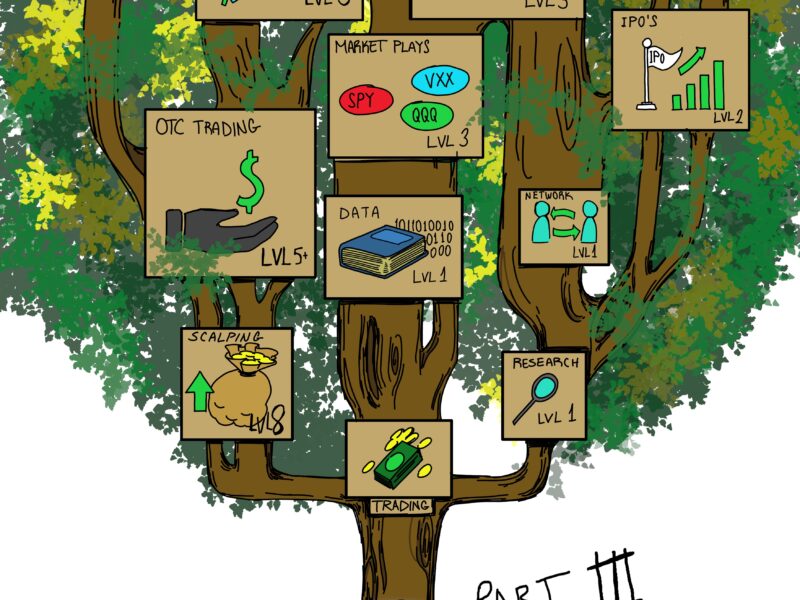


The best trading blog-series ever!
Interesting and inspiring! Thank you for writing!
What happened to Green Ivory Capital? Can’t seem to find anything on web searches.
I plan to write about “Green Ivory” in the future.
Victor & Avery sound like they couldn’t trade for shit…
lmao. my thoughts exactly 😉
This is market wizards level good, maybe better.
Enjoy the journey guys and gals.
I am so happy for you! I love this!!